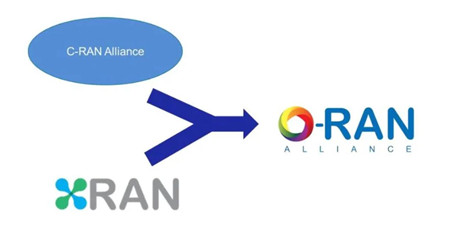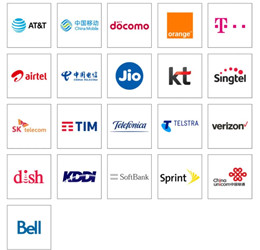
"We have no choice but to suspend all our technical work activities in the organization."
Recently, according to an email seen by foreign media POLITICO, Nokia informed the O-RAN alliance.
According to the report, because Chinese companies such as Kindroid, Phytium, and Inspur among the O-RAN alliance members are on the US entity list, Nokia is worried that cooperation with them will be sanctioned by the US government and has to suspend work in the O-RAN alliance. .
The article also pointed out that in addition to Nokia, companies that may face violations of US entity regulations include operators such as Deutsche Telekom, Telefónica, and Vodafone, as well as technology companies such as Facebook, Microsoft, Intel, and Cisco. These companies have participated in the relevant work of the O-RAN alliance.
As soon as this report came out, it triggered speculation that the O-RAN alliance might break down.
Among the major traditional telecommunications equipment vendors, Nokia is the most active promoter of O-RAN. It participates in the technical research work of all O-RAN working groups and leads the two working groups of prequel and RIC.
Many industry insiders have analyzed that now that Nokia presses the pause button, more companies may follow in Nokia's footsteps, suspend or even terminate their membership in organizations such as the O-RAN Alliance, which will trigger the disintegration of the O-RAN Alliance.
What is the O-RAN Alliance?
The O-RAN Alliance was initiated and established in February 2018 by five operators: China Mobile, AT&T, Deutsche Telekom, NTT DOCOMO and Orange. It was formed by the merger of the original C-RAN Alliance and the xRAN Forum. Among them, the C-RAN Alliance mainly Composed of Chinese companies, the xRAN Forum is mainly composed of AT&T, NTT DOCOMO and other American, Japanese, Korean and European companies.

The main vision of the O-RAN Alliance is to promote the open, modular and intelligent development of the radio access network (RAN) through open interfaces, virtualized network elements and the introduction of intelligent controllers.
The O-RAN Alliance will formulate standards as a supplement to the 3GPP standards. The O-RAN Alliance is composed of nine working groups (WG), which are responsible for technical research in different fields. WG1 is responsible for researching use cases and overall architecture, WG2 is responsible for researching non-real-time RIC and A1 interfaces, and WG3 is responsible for researching near real-time RIC and E2 interfaces. WG4 is responsible for researching open fronthaul, WG5 is responsible for researching open F1/W1/E1/X2/Xn interfaces, WG6 is responsible for cloudification and orchestration, WG7 is responsible for hardware whiteboxing, WG8 is responsible for software open source, WG9 is responsible for open X-haul transmission.
According to reports, the number of O-RAN alliance members has grown to 237, including 82 American companies and 44 Chinese companies. my country’s three major operators, China Mobile, China Telecom, and China Unicom, are all members of the O-RAN alliance.

Will the O-RAN alliance break down?
O-RAN was originally a technology alliance, but as the Sino-US science and technology disputes intensified, it was cast a strong political shadow by a few politicians. For example, in April and May of this year, when the President of the United States met with Japanese Prime Minister Yoshihide Suga and South Korean President Moon Jae-in, the press releases issued by the White House all mentioned the need to work together to promote Open RAN technology development and standardization.
As mentioned above, O-RAN aims to promote the openness and intelligence of radio access networks by promoting network virtualization and software-defined networking centered on open source code architecture. Industry research organization Strand Consult recently wrote in a report that O-RAN alliance members exchange specifications on open RAN every 6 months, which means that 44 Chinese member companies, including companies on the US entity list, will at least annually The new open RAN code can be obtained twice. For this reason, non-Chinese companies may reconsider their membership in the O-RAN alliance to avoid sanctions by the US government. As a result, the O-RAN alliance, an international organization, may break down.
It is worth thinking about that the goal of O-RAN was to break the traditional wireless device architecture with integrated software and hardware through interface openness and network virtualization, in order to achieve modular networking in a multi-vendor environment. Therefore, in O-RAN Under the architecture, it is very important to achieve integration and interoperability between components from different vendors.
Once the O-RAN alliance breaks down, without multiple operators and multiple suppliers jointly formulating specifications to promote interoperability and compatibility of modular networking, Open RAN will inevitably be more difficult to develop and even become worthless.

